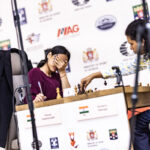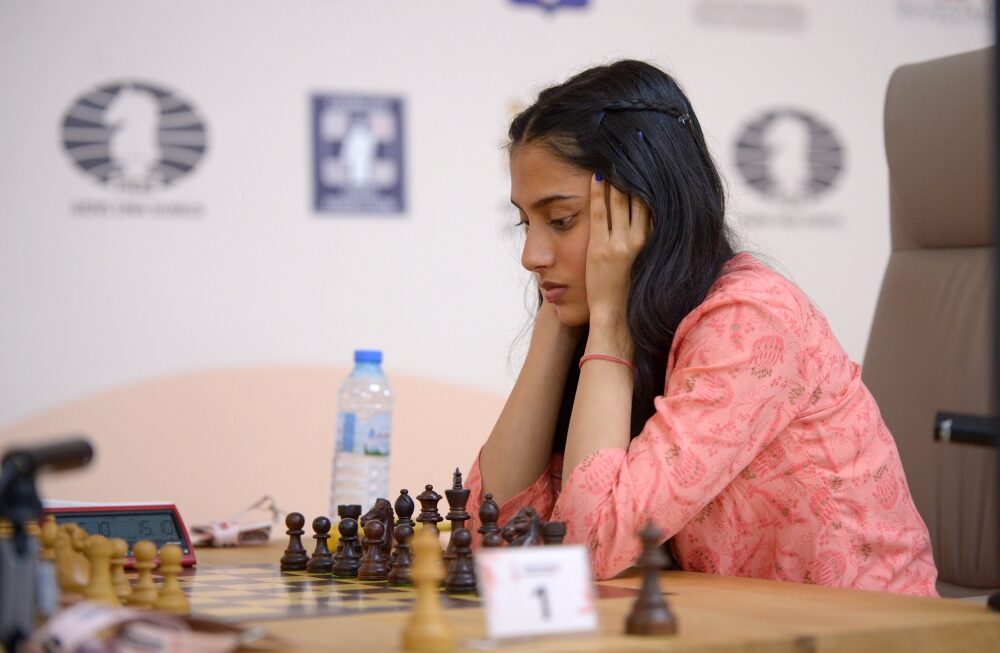England vs India Women’s Cricket Second ODI: Complete Match Analysis and Series Overview
England Women’s Cricket Team Levels Series Against India at Lord’s
The second One Day International between England Women and India Women at the historic Lord’s Cricket Ground delivered a thrilling encounter that saw the hosts bounce back from their opening defeat to level the series at 1-1. This rain-affected match showcased the resilience of both teams and highlighted the competitive nature of women’s international cricket in 2025.
Match Summary: Rain-Interrupted Victory for England
England Women secured victory by 8 wickets with 18 balls remaining using the DLS method, chasing down a revised target after rain disrupted play. The match witnessed exceptional bowling performances from England’s spin attack, which proved instrumental in restricting India to a below-par total in the shortened game format.
India Women’s Batting Performance Under Pressure
India’s batting lineup, which had performed admirably in the first ODI, encountered significant challenges against England’s spinners at Lord’s. The Indian batting order struggled against the spinning conditions as England’s bowlers exploited the damp pitch conditions effectively. The visitors managed to post 143 runs for 8 wickets in their allocated overs, a total that ultimately proved insufficient against a determined England batting unit.
The Indian batting collapse highlighted the importance of adapting to English conditions, particularly when facing quality spin bowling on a surface that offered assistance to the slower bowlers. Key batters who had contributed significantly in the series opener found themselves unable to replicate their form, demonstrating the unpredictable nature of cricket and the fine margins that separate victory from defeat at the international level.
England’s Strategic Bowling Masterclass
Sophie Ecclestone’s Spin Wizardry
Sophie Ecclestone emerged as the standout performer for England, leading the spin attack with her characteristic accuracy and variations. Her ability to extract turn and bounce from the Lord’s surface proved crucial in dismantling India’s batting structure. The left-arm spinner’s control over line and length, combined with her tactical awareness, exemplified why she remains one of the world’s premier spin bowlers in women’s cricket.
Supporting Cast Delivers Under Pressure
England’s bowling attack showcased remarkable depth and versatility, with multiple bowlers contributing to the collective effort. The supporting spinners complemented Ecclestone’s efforts perfectly, creating sustained pressure on the Indian batters throughout their innings. This collective bowling performance demonstrated England’s tactical maturity and their ability to adapt their strategy based on pitch conditions and match circumstances.
Amy Jones: The Anchor of England’s Chase
Amy Jones played a pivotal role in England’s successful chase, contributing 45 runs before the rain intervention. Her composed batting display provided the foundation for England’s victory, showcasing technical proficiency and tactical awareness that has become synonymous with modern women’s cricket.
Jones’s innings demonstrated the importance of building partnerships and maintaining a steady scoring rate, particularly in rain-affected matches where revised targets can change the dynamics significantly. Her ability to rotate the strike while capitalizing on scoring opportunities reflected the maturity and experience that England possess in their batting lineup.
Nat Sciver-Brunt’s Valuable Contribution
Nat Sciver-Brunt provided crucial support with her 21-run contribution, forming a partnership that stabilized England’s chase and ensured they remained ahead of the required rate throughout their innings. Her all-round capabilities continue to make her an invaluable asset to the England team, bringing both batting depth and bowling options when required.
Impact of Weather Conditions on Match Dynamics
The rain interruption significantly altered the match’s trajectory, forcing both teams to adapt their strategies according to the Duckworth-Lewis-Stern method. This weather intervention highlighted the importance of maintaining scoring rates and wickets in hand during shortened formats, as teams must constantly recalibrate their approach based on changing circumstances.
The damp conditions at Lord’s also influenced bowling strategies, with spinners gaining additional assistance from the surface while pace bowlers had to adjust their lengths and approaches. These variable conditions tested both teams’ adaptability and tactical flexibility, ultimately favoring England’s home advantage and familiarity with such playing conditions.
Series Context: Building Momentum Toward Decider
First ODI Victory Sets Stage for India
India had established series momentum with their 4-wicket victory in the opening ODI at Southampton, chasing down England’s 262 with 10 balls to spare. This initial success demonstrated India’s batting depth and their ability to handle pressure situations in challenging conditions away from home.
The first match revealed both teams’ strengths and areas for improvement, setting up an engaging series where tactical adjustments and individual performances would prove decisive. India’s successful chase in the opener showcased their batting maturity and confidence against quality opposition.
Historical Significance of India’s Tour Success
India’s recent success extends beyond this ODI series, having secured their first T20I series victory on English soil with a 3-1 triumph. This achievement underscores India’s development as a formidable force in women’s cricket and their ability to compete effectively in challenging overseas conditions.
The T20I series victory provided India with significant confidence and momentum entering the ODI series, demonstrating their all-format capabilities and the depth of talent available in Indian women’s cricket.
Technical Analysis: Key Performance Indicators
Bowling Statistics and Impact
England’s bowling performance in the second ODI exemplified the importance of taking wickets in the middle overs to create scoreboard pressure. The spin-dominated attack successfully exploited conditions to restrict India’s scoring opportunities and create regular dismissals that prevented any significant partnerships from developing.
The bowling figures reflected excellent teamwork and strategic planning, with each bowler understanding their role within the broader team strategy. This coordinated approach highlighted the tactical sophistication that characterizes modern women’s international cricket.
Batting Approach and Execution
England’s batting strategy emphasized building partnerships and maintaining positive intent despite the interruptions caused by weather conditions. The approach demonstrated tactical maturity and the ability to assess match situations accurately while executing plans under pressure.
The successful chase showcased England’s depth and flexibility in their batting order, with different players capable of adapting their roles based on match requirements and external circumstances.
Individual Milestone Achievements
Smriti Mandhana’s Record-Breaking Partnership
Smriti Mandhana and Shafali Verma recorded the most runs (2,724) as a partnership in women’s T20Is, surpassing Australia’s Beth Mooney and Alyssa Healy (2,720). This achievement highlights the consistency and effectiveness of India’s opening combination across formats.
Richa Ghosh’s Career Milestone
Richa Ghosh reached the significant milestone of 1,000 runs in T20I cricket, demonstrating her development as a key contributor to India’s batting lineup across different formats and conditions.
Strategic Implications for Series Decider
England’s Home Advantage Factors
The victory at Lord’s reinforced England’s advantages when playing in familiar conditions, particularly their understanding of how to utilize spinning conditions effectively. Their bowling attack’s success against India’s batting lineup provides tactical insights that could prove crucial in the series-deciding encounter.
England’s ability to adapt to weather-affected conditions and execute their plans under pressure demonstrates the experience and composure that comes with regular exposure to English playing conditions.
India’s Adaptation Requirements
India’s performance in the second ODI highlighted areas requiring attention, particularly their approach against quality spin bowling on responsive surfaces. The team’s ability to analyze and address these challenges will determine their prospects in the series decider.
The experience gained from this defeat could prove valuable for India’s long-term development, providing lessons about adapting strategies and maintaining composure when conditions favor the opposition.
Pitch and Ground Analysis: Lord’s Cricket Ground
Surface Characteristics and Bowling Conditions
The Lord’s surface for the second ODI offered assistance to spin bowlers while requiring pace bowlers to adjust their strategies accordingly. The damp conditions created additional challenges for batters, demanding technical adjustments and increased concentration levels.
These pitch characteristics influenced team selections and strategic approaches, with both sides recognizing the importance of quality spin bowling in these conditions.
Historical Significance of Lord’s for Women’s Cricket
Playing at Lord’s represents the pinnacle of cricket achievement, and this match continued the venue’s tradition of hosting significant encounters in women’s international cricket. The ground’s history and prestige add additional motivation for players while showcasing women’s cricket on one of the sport’s most iconic stages.
Team Composition and Selection Strategies
England’s Balanced Attack
England’s team selection emphasized bowling depth and all-round capabilities, reflecting their strategic approach to home conditions and the importance they place on taking wickets consistently. The balance between spin and pace bowling options provided tactical flexibility throughout the match.
India’s Touring Strategy
India’s selection decisions reflected their confidence in their established combinations while acknowledging the challenges of adapting to English conditions. The team’s approach demonstrated their commitment to aggressive cricket while maintaining core strengths that had delivered success in the T20I format.
Future Implications for Women’s Cricket Development
Competitive Balance Enhancement
The closely contested series demonstrates the competitive balance that now characterizes women’s international cricket, with multiple teams capable of achieving success against traditionally stronger opponents. This development benefits the sport’s global growth and spectator appeal.
Technical Standards Evolution
The high-quality cricket displayed throughout the series reflects the continuing evolution of technical standards and tactical sophistication in women’s international cricket. These improvements contribute to increased spectator interest and media coverage.
Series Statistics and Performance Metrics
The statistical analysis of the series reveals interesting patterns in scoring rates, bowling effectiveness, and strategic decision-making that highlight the tactical complexity of modern women’s cricket. These metrics provide valuable insights for teams, coaches, and analysts studying the sport’s development.
Media Coverage and Global Interest
The extensive media coverage surrounding this series demonstrates the growing global interest in women’s cricket and the recognition of these players as elite international athletes. This increased visibility contributes to the sport’s commercial development and inspirational impact.
Weather Contingency Planning
The successful management of weather-affected conditions during the second ODI showcased the importance of contingency planning and adaptability in international cricket. Both teams’ ability to adjust their strategies demonstrates the professional standards that characterize modern women’s international cricket.
Technology Integration and Decision Making
The use of DLS calculations and other technological aids during the rain-affected match highlighted how modern cricket integrates technology to ensure fair outcomes while maintaining competitive integrity. These tools have become essential components of professional cricket administration.
Series Decider Implications and Expectations
With the series level at 1-1, the final encounter promises to deliver another compelling contest between two evenly matched teams. Both sides have demonstrated their capabilities while identifying areas for improvement, setting up an intriguing conclusion to this engaging series.
The lessons learned from the first two matches will influence team strategies and selections for the decider, with both sides seeking to capitalize on their strengths while addressing identified weaknesses.
flowchart TD
A[England vs India Women's ODI Series 2025] --> B[First ODI - Southampton]
A --> C[Second ODI - Lord's]
A --> D[Series Decider - Upcoming]
B --> E[India Won by 4 Wickets]
E --> F[India 258/6 vs England 262/6]
C --> G[England Won by 8 Wickets - DLS]
G --> H[England 116/2 vs India 143/8]
H --> I[Key Performances]
I --> J[Sophie Ecclestone - Spin Bowling]
I --> K[Amy Jones - 45 runs]
I --> L[Nat Sciver-Brunt - 21 runs]
F --> M[Series Context]
M --> N[India's T20I Series Victory 3-1]
M --> O[Building Momentum for Both Teams]
D --> P[Series Level 1-1]
P --> Q[Winner Takes Series]
style A fill:#f9f,stroke:#333,stroke-width:4px
style G fill:#90EE90,stroke:#333,stroke-width:2px
style E fill:#FFB6C1,stroke:#333,stroke-width:2px
This comprehensive analysis provides detailed insights into the England vs India Women’s Cricket Second ODI, offering technical analysis, strategic perspectives, and contextual information that enhances understanding of this significant international cricket encounter.













